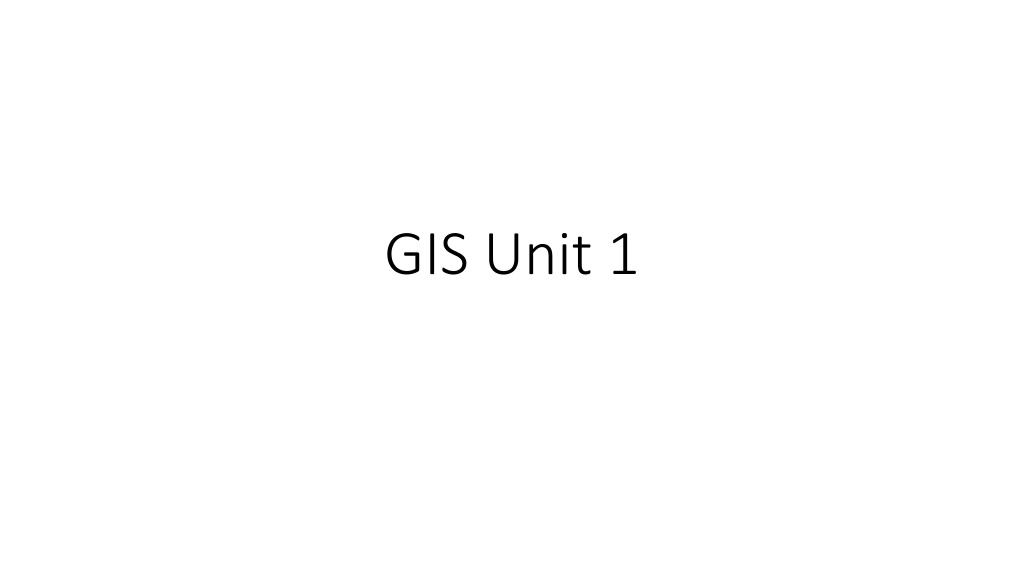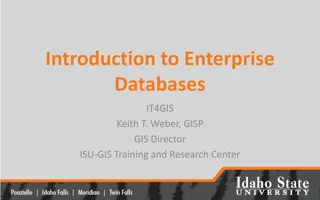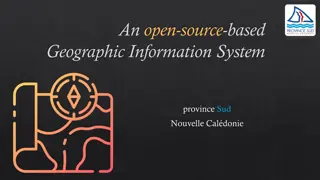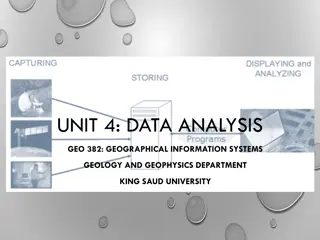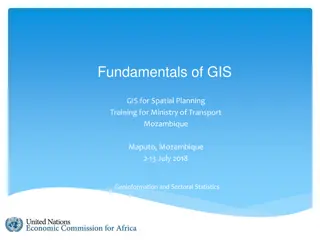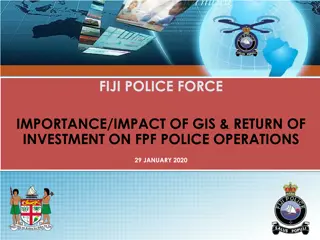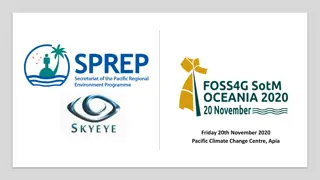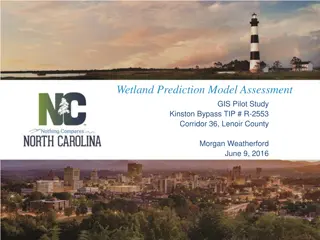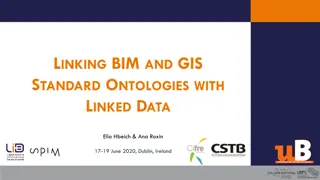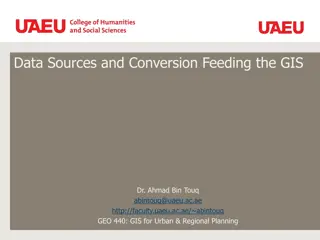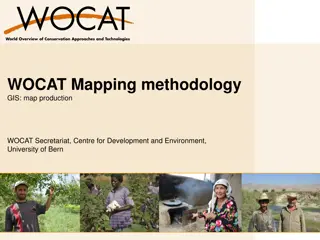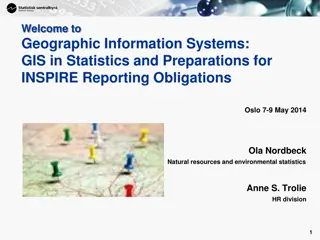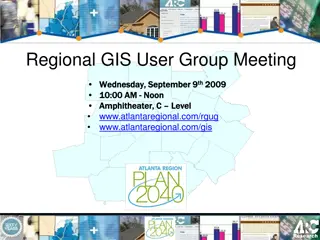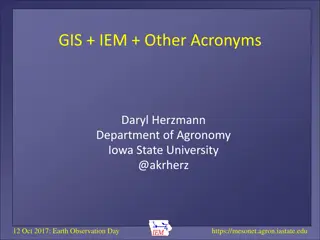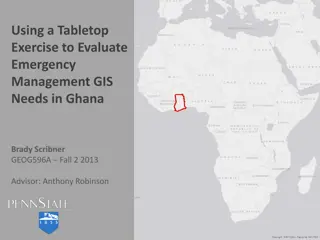Understanding Geographic Objects in GIS
Geographic objects play a crucial role in GIS by being easily distinguished and named based on parameters like location, shape, size, and orientation. These objects are studied collectively to understand their interactions and relationships, aiding in tasks such as navigation systems and route optimization. Boundaries, whether crisp or fuzzy, define the extent of areas and contribute to the accurate representation of geographic phenomena.
Download Presentation

Please find below an Image/Link to download the presentation.
The content on the website is provided AS IS for your information and personal use only. It may not be sold, licensed, or shared on other websites without obtaining consent from the author. Download presentation by click this link. If you encounter any issues during the download, it is possible that the publisher has removed the file from their server.
E N D
Presentation Transcript
Geographic objects Not present everywhere in the study area Objects are usually easily distinguished and named, and their position in space is determined by a combination of one or more of the following parameters: Location (where is it?) Shape (what form is it?) Size (how big is it?) Orientation (in which direction is it facing?) How we want to use the information about a geographic object determines which of the four above parameters is required to represent it.
Geographic objects In-car navigation system Petrol stations where they are. Thus, location alone is enough to describe. shape, size and orientation are not necessarily relevant. Roads notion of location (where does it begin and end), shape (how many lanes does it have), size (how far can one travel on it) and orientation (in which direction can one travel on it) seem to be relevant information components.
Geographic objects We usually do not study geographic objects in isolation, but more often we look at collections of objects viewed as a unit E.g forest plots form forests, groups of parcels form suburbs, roads form a road network Different objects do not occupy the same location This natural law of mutual non-overlap has been a guiding principle in the design of computer representations of geographic phenomena We can study graphic phenomena at this more aggregated level and look at characteristics like coverage, connectedness, and capacity
Geographic objects Which part of the road network is within 5 km of a petrol station? (A coverage question) What is the shortest route between two cities via the road network? (A connectedness question) How many cars can optimally travel from one city to another in an hour? (A capacity question)
Boundaries Location, shape and size are fully determined if we know an area s boundary, so the boundary is a good candidate for representing it. Crisp and fuzzy boundaries Crisp boundary precise, distict zone of change, represented by distinct lines that seperates various regions of the data Fuzzy boundary imprecise an area of transition broader region of change crisp boundaries are more common in man-made phenomena, whereas fuzzy boundaries are phenomena more common with natural
Computer representations of geographic information In order to represent such a phenomenon faithfully in computer memory, we could either: Try to store as many (location; elevation) observation pairs as possible, or Try to find a symbolic representation Drawbacks: Infinitely many locations difficult to derive a function for larger areas To overcome this we store a finite, but intelligently chosen set of sample and then interpolate it.
Computer representations of geographic information Interpolation is a method of constructing new data points within the range of a discrete set of known data points. Used to estimate values between two points. Interpolation is made possible by a principle called spatial autocorrelation. This is a fundamental principle which refers to the fact that locations that are closer together are more likely to have similar values than locations that are far apart - commonly referred to as Tobler s first law of Geography . Spatial autocorrelation is how well data points correlate with other nearby data points across a spatial area.
Tessellations The process of tessellating the surface Tessellation of a flat surface is the tiling of a flat surface using one or more geographic shapes called tiles with no overlaps & no gaps.
Regular tessellations In a regular tessellation, the cells are the same shape and size. field attribute value assigned to a cell is associated with the entire area occupied by the cell. The three most common regular tessellation types: square cells, hexagonal cells, and triangular cells. These tessellations are known under various names in different GIS packages, but most frequently as rasters.
Irregular tessellations more adaptive to geographic phenomena region quadtree It is based on a regular tessellation of square cells, but takes advantage of cases where neighbouring cells have the same field value, so that they can together be represented as one bigger cell. It shows a Quadtrees small 8 8 raster with three possible field values: white, green and blue. The quadtree that represents this raster is constructed by repeatedly splitting up the area into four quadrants, which are called NW, NE, SE, SW The procedure produces an upside-down, tree-like structure, known as a quadtree.
